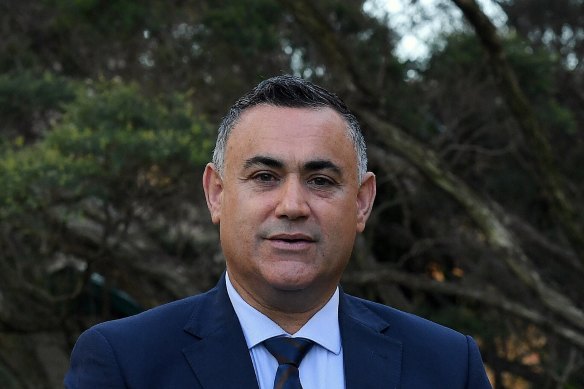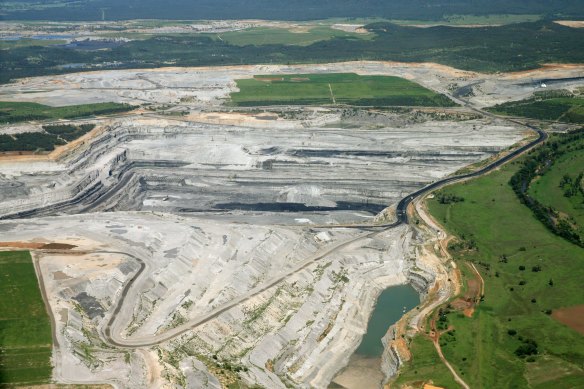This was published 3 years ago
Green groups blast Barilaro’s ‘cherry-picking’ Hunter pollution claim
By Peter Hannam
Hunter Valley health and environment advocates have dismissed as “laughable” claims by Deputy Premier John Barilaro that the pollution data for the region had been manipulated by opponents of mining for political purposes.
“This whole issue around clean air especially in the Upper Hunter and across the state is that people manipulate the data to suit their argument,” Mr Barilaro told local ABC radio on Tuesday, referring to air-quality information gathered by the government’s own network of monitoring sites.

Deputy Premier John Barilaro’s claims that pollution data for the Hunter Valley has been manipulated have been challenged.Credit: Kate Geraghty
But Environmental Justice Australia’s clean air campaigner Max Smith said air pollution in the Hunter Valley has long been among the worst in the country because of the region’s coal mines and power plants.
“It is unclear who Minister Barilaro is suggesting is manipulating the data, though presumably he means the health experts and community organisations who have raised legitimate concerns about the health impacts of air pollution in the Hunter,” Mr Smith said.
Mr Smith said Upper Hunter GPs have estimated that dangerous coarse particle pollution of 10 micrometres or smaller, known as PM10, had caused at least 160 premature deaths in the region in 2015-19.
“In 2019, residents in the Upper Hunter Valley received more than 1000 air pollution alerts when national air quality standards for PM10 were exceeded,” Mr Smith said.
“In 2018, a year without severe bush fires, six monitoring sites in the Upper Hunter Valley recorded PM10 concentrations that exceeded the annual standard of 25 [micrograms per cubic metre]. The village of Camberwell experienced 44 days where PM10 exceeded the 24-hour standard of 50.”
Mr Barilaro, who is due to announce the Nationals’ candidate for the Upper Hunter byelection on Thursday morning at a coal mine, told the Herald pollution figures “have been misinterpreted by anti-mining propagandists who are cherry-picking one-off measurements to suit their agenda”.
“Air quality in the Upper Hunter has improved over the past six months,” he said. “Daily [particulate] levels in Muswellbrook and Singleton have been within the national benchmark for 99 per cent of the time during Spring 2020.
“As a consequence of the standardised hourly reporting, short term peaks do occur but these statistical outliers are the exception rather than the rule.”
The future of coal mining has already become a focal point in the Upper Hunter byelection set for May 22 following the resignation of Nationals MP Michael Johnsen over a rape allegation which he denies.
“Coal jobs and air pollution will be the big issues,” said Bob Vickers, a Singleton GP who argues agencies such as the NSW Environment Protection Authority should be doing more to force power plants to scrub toxic pollutants - such as sulphur dioxide and nitrogen oxides - from the smoke stacks.

The Wambo coal mine in the Hunter Valley.Credit: Dean Osland
Coal mines should also be slapped with stop-work orders when pollution alerts are issued, he said.
“We know what the sources of the pollution are and we know what the methods are that we can take to fix it,” Mr Vickers said.
Mr Vickers said another concern was that coal mines defer rehabitation of their pits by seeking extensions of their operations.
With coal demand likely to decline over time, many of them won’t have the funds necessary to repair their voids, leaving the community at risk from the resulting dust and other particulate pollution, he said.
The Herald approached the NSW Minerals Council for comment.